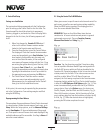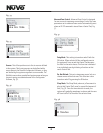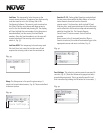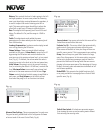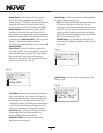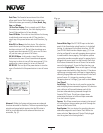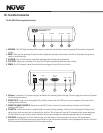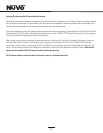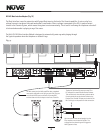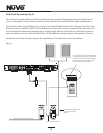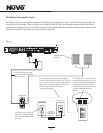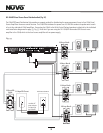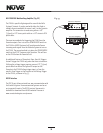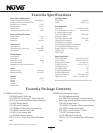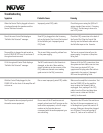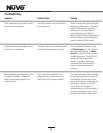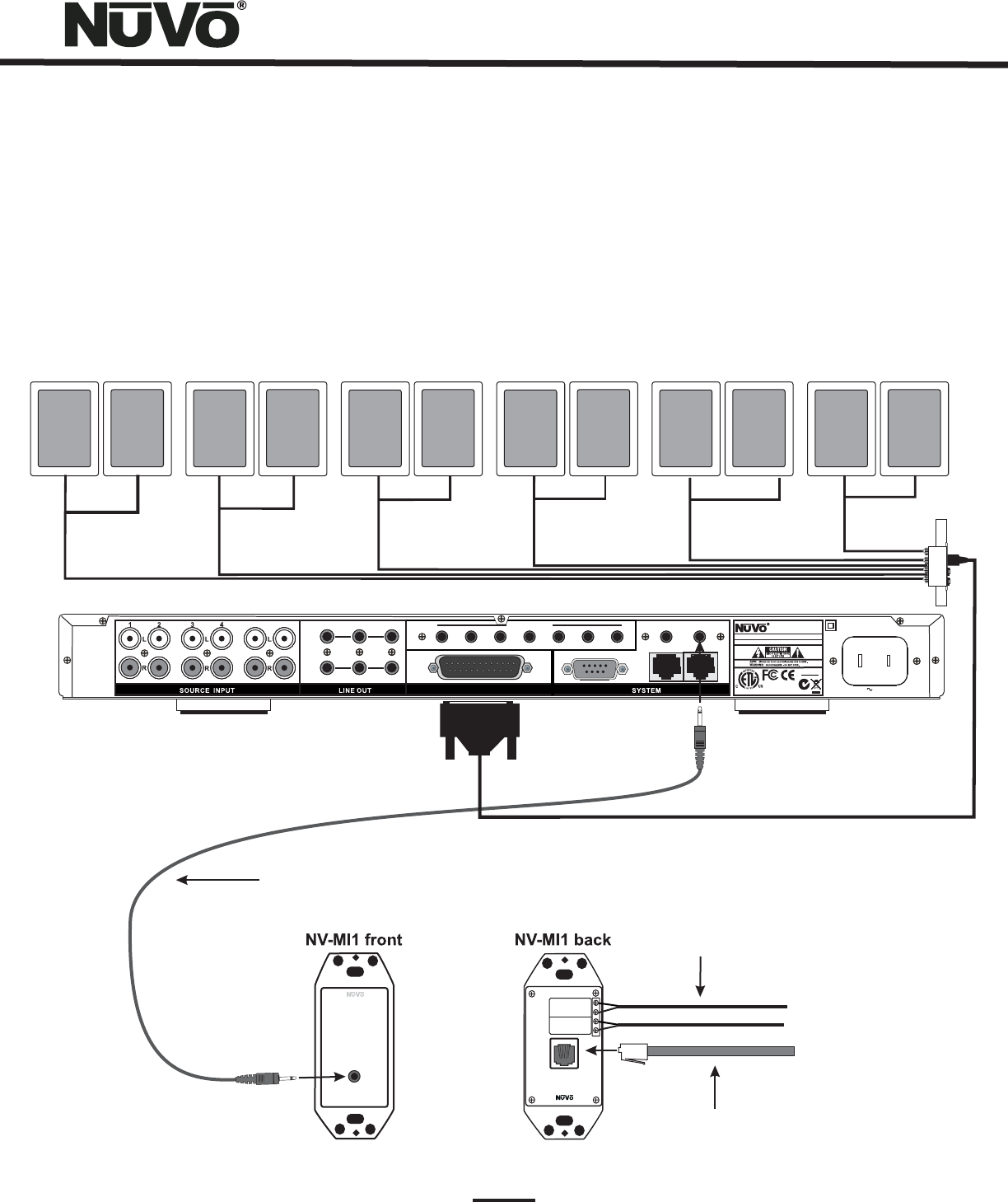
MUTE INTERFACE
ADAPTER
NV-MI1
CONNECT TO
MUTE INPUT
A
B
A
B
DOORBELL 1
DOORBELL 2
Connect to Telephone RJ11
Line 1: Pins 3,4 Line 2: Pins 2,5
Mute Interface Module
Model NV-MI1
The NuVo NV-MI1 Mute Interface Module is designed to automatically mute any audio playing through
the System’s speakers when the telephone or doorbell rings.
The MI1 connects to the NuVo amplifier using a standard
mono patch cable with a mini-plug on each end. Plug one
end into the MUTE input on the back of the amplifier
and the other end into the input on the front of the MI1.
The back of the MI1 will accept up to two AC or
DC voltages from two different doorbell chimes.
This connection is done with two conductor wires
from the terminals on the doorbell chime to the
Doorbell A or Doorbell B inputs on the back of the
MI1. Polarity is not important for this connection.
Up to two phone lines can be brought into the
RJ11 connection on the back of the MI1. The
voltage from the phone ringer will trigger the
NuVo System to mute.
32
NV-MI1 Mute Interface Adaptor (Fig. 51)
The Mute Interface is used in conjunction with System Mute input on the back of the Essentia amplifier. It acts as relay for a
voltage from up to two phone lines and two doorbell transformers. When a voltage is presented to the MI1, it sends a contact
closure to the Essentia System, which causes the system to mute momentarily. This is useful in allowing the telephone or doorbell
to be heard when audio is playing in any of the zones.
56
FIXED VAR
ZONE
1
TRIG
ZONE
2
STATUS
NuVoNet
RS232
1
SUM
ALLPORTCONNECTION
IR OUTPUTS
23456
LINK
MUTE
MADEINCHINA
100~240V 50~60Hz130W
1807
N1839
www.nuvotechnologies.com
MODELNV-E6GM
SIX SOURCESIX ZONE
AUDIO DISTRIBUTIONSYSTEM
3033118
NuVoTechnologiesLLC Hebron,Kentucky USA•
CONFORMS TOUL
STD.60065 CERTIFIED
TO CAN/CSASTD.
C22.2 No.60065:03
RoHS
CCC
C
C
C
C
C
C
C
C
C
C
C
C
C
C
C
C
C
C
C
C
C
C
C
C
C
C
C
C
C
C
C
C
C
C
C
C
C
C
C
C
C
C
C
C
C
C
C
C
C
C
C
C
C
C
C
C
C
C
C
C
C
C
C
C
C
C
C
C
C
C
C
C
C
C
C
C
C
C
C
C
C
C
C
C
C
C
C
C
C
C
Fig. 51



